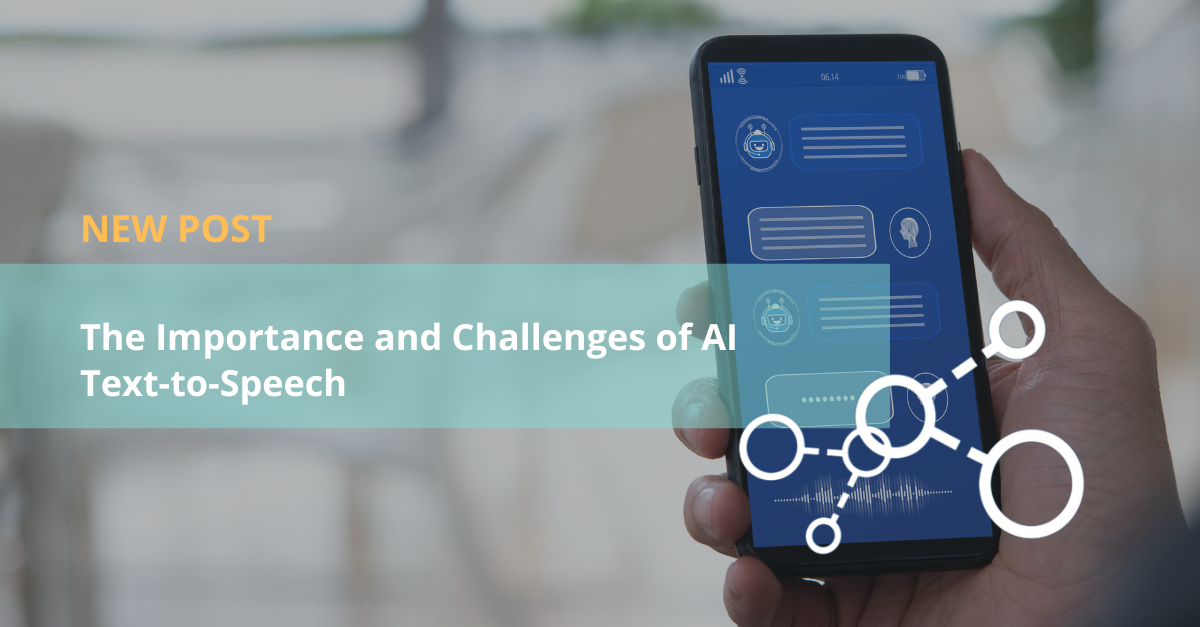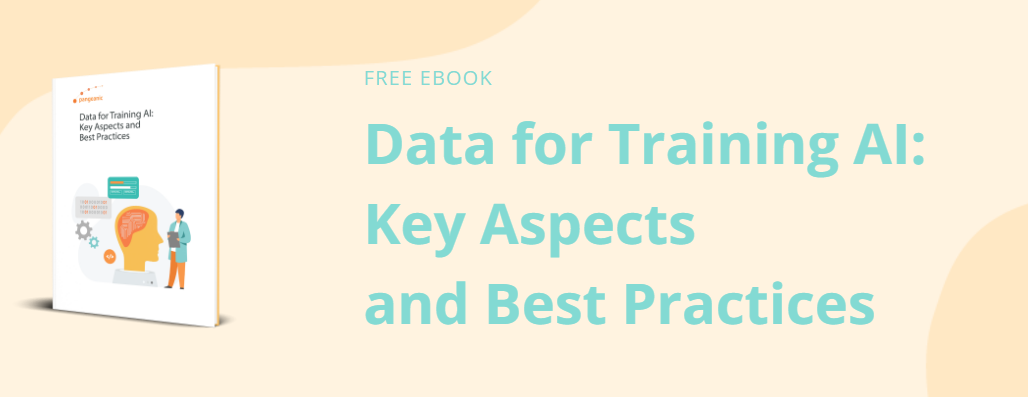
5 min read
21/04/2023
The Importance and Challenges of AI Text-to-Speech
What does converting text to speech consist of?
Text-to-speech (TTS) technology transforms written text into audio format with a human-like voice. It is based on natural language processing and machine learning algorithms and can be used on a wide variety of digital devices, from smartphones and tablets to computers. In addition, it allows books, Word or Pages documents, and websites to be read aloud.
Looking for an advanced data annotation platform?
Discover PECAT and get a custom solution with our speech annotation tool.
Talk to an expert, see voice annotation services
The importance of Text-To-Speech in the current climate
TTS facilitates communication in a variety of settings which makes it an important tool for a wide range of reasons. In the health sector, for example, it has helped physicians to document patient interaction more efficiently, thus allowing them to focus on the care they deliver. In addition, this technology makes communication more accessible to people with speech or reading disabilities, such as visual impairments, dyslexia or other difficulties, by converting text into audio format.
Another area in which text-to-speech can be helpful is education, as it can help to improve pronunciation in children's reading through the use of audiobooks.
Thanks to advances in text-to-speech technology, the accessibility of written information through speech has significantly improved. As technology continues to advance, TTS systems are expected to become increasingly sophisticated and have an even more natural voice in the future.
Voice recognition is one of the main uses and applications of language modeling in NLP.
Learn more in this article:
Text-to-speech AI training
In order to train an AI model to read a text and reproduce it in a human voice, a dataset containing voice recordings and the corresponding text is needed.
The model learns to recognize patterns in the text and generates the corresponding audio.
However, the question is: Whose voice is used to reproduce the text? There are people who have recorded hours of audio to allow models to reproduce texts using their own voice. Furthermore, there are more sophisticated models that are capable of interpreting new words and pronunciation, even in other languages.
More information:
Text-to-speech applications for businesses
Text-to-speech technology can improve efficiency, accessibility, and communication, offering an effective and cost-efficient solution for various business tasks. For example, it can be useful for generating training material using text patterns and playing presentations aloud, which is beneficial for those who prefer to listen rather than read. In addition, this technology can also be used to read business reports. There are even internal company messaging services that play the messages for those who don't wish to or cannot read them.
Another relevant application is its use for individuals with speech disabilities, enabling communication with other people.
Text-to-speech can also be used to determine the pronunciation of a phrase in a particular language. In addition, by using a machine translation system, you can write text in Spanish, translate it into British English, and reproduce the text with an English voice and pronunciation.
The reverse text-to-speech process
Speech-to-text
The speech-to-text (STT) process or voice recognition, also known as voice dictation, is technology that allows the user to transform spoken language into written text. This is the reverse process of the text-to-speech technology we saw before.
This type of technology is most often used in virtual assistants, such as Alexa or Google Assistant, where an instruction can be dictated and the device converts it into text to perform the task. For example, turning on a light or asking whether it will rain. In addition, on mobile devices, it allows you to create voice memos or reminders that are then transcribed to text, and it is also used in messaging systems where you can dictate a message and send it in text format.
In the corporate environment, the use of this technology is becoming more widespread for transcribing meetings and creating minutes. By integrating them with more advanced tools such as the GPT models, it is possible to generate summaries and make notes on the commitments made, among other tasks.
In medical terms, it is of great help to people with physical disabilities or coordination problems.
We provide you with the text from your audio, video or audiovisual material.
Discover Pangeanic's fast and agile transcription process. View transcription services
AI speech-to-text tools
Different kinds of artificial intelligence technology are available to convert speech to text. Large companies offer specific solutions for this task, such as Google Speech-to-Text, Amazon Transcribe, Microsoft Azure Speech-to-Text, and IBM Watson.
In addition, there are online tools such as Voice Dream Reader, which reads articles, documents, and books aloud. Otter.ai is a tool for recording and transcribing meetings, and generating meeting notes. SPEECHTEXT.AI allows you to transcribe audio and video in several languages, while OpenAI's Whisper is a very accurate tool for voice transcription in several languages.
There is also Synthesia, a platform for creating videos from text, which allows you to make a spoken and gestured presentation without the need to record.
There are also web-browser extensions such as Read&Write for Google Chrome, which allows reading aloud in different languages and other useful functions.
Each tool has its specific features and pricing, some offer free plans with limitations, while others require a subscription or a pay-per-use system.
The future challenges for AI text-to-speech tools
People who are more familiar with the technology often use text-to-speech and speech-to-text applications without realizing it. For example, when we dictate to send a message or use our phones to read out received messages.
There are also devices with virtual assistants like Siri, Google Assistant, or Alexa that capture audio, convert it to text, and then use it as an instruction to perform actions. They are present in navigation systems, search engines, audiobooks and other applications, and are also used to create voice-overs for videos and presentations. They can be of great help to people with conditions such as learning or cognitive disabilities.
However, challenges arise in text-to-speech, such as the development of intonation, accent, and pronunciation, as well as the ability to interpret the context in which a word is used in order to pronounce it correctly.
Variations in the voice must also be generated based on the context. For example, a voice used for radio is generally faster than one used for a live presentation. Another challenge is trying to make the voice sound as natural and emotionally expressive as possible, avoiding a robotic sound. Despite these challenges, there have been advances in reproducing more human-like voices, and even in voice cloning (which is the subject of a whole other article).
Speech-to-text technology presents several major challenges, including the identification of speakers in an audio file, i.e. the ability to recognize and transcribe the different voices present. In addition, having support for multiple languages is essential, as well as enhanced models based on specific contexts for improving transcription accuracy.
It is important to mention the emergence of the GPT large language models, which have opened up new possibilities for integrating text-to-speech and speech-to-text technology. By combining this language generation model with TTS or SST technology, for example, the accuracy and quality of the texts could be improved by summarizing, translating, or even reformulating questions so that they can be understood by a device. It is very likely that this technology will continue to evolve and have even more exciting applications in the future.
More information:
Final Thoughts on the Potential Global Consequences of ChatGPT in 2023
Despite these challenges, AI voice synthesis has the potential to transform the way we interact with technology and improve accessibility for all. As technology continues to advance, we are likely to see even more applications of this exciting technology in the future.



